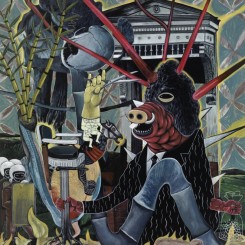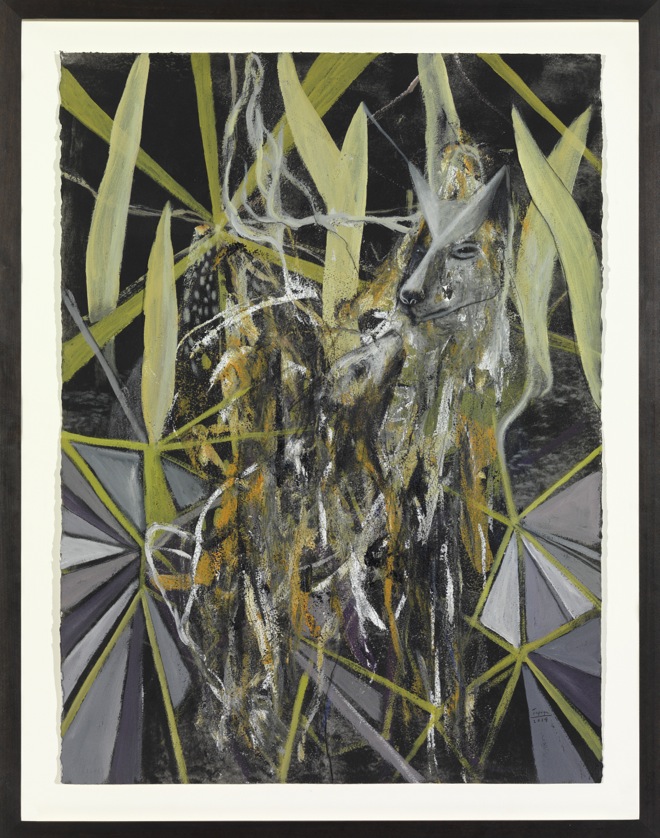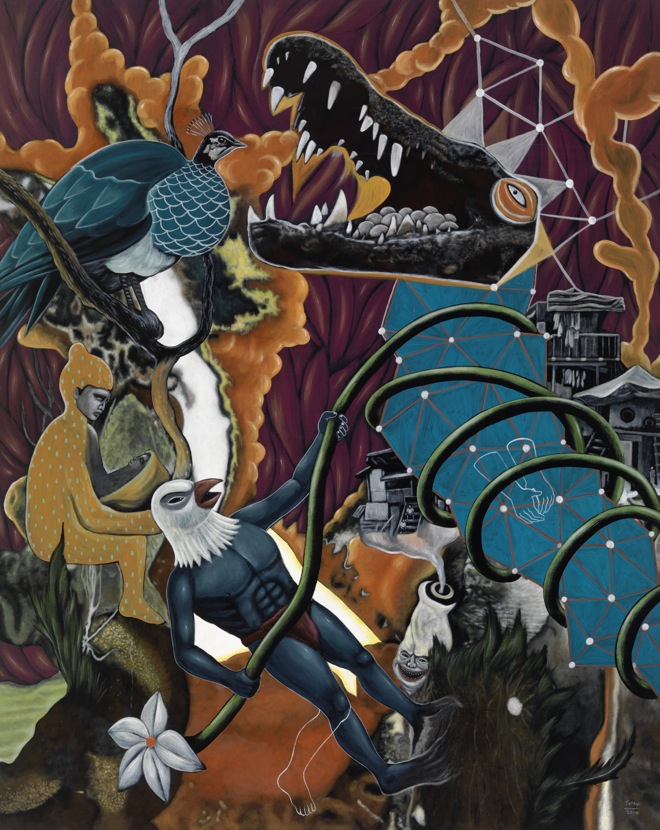Rodel Tapaya “The Chocolate Ruins” solo show
ARNDT Berlin (Potsdamer Straße 96, 10785 Berlin) Mar 15–Apr 26, 2014
More magic-diorama than tableaux, “The Chocolate Ruins” (2013), after which Rodel Tapaya’s solo-show at ARNDT Berlin this month is named, represents a multidimensional—spatial, political, religious—ethical and historical statement. Big themes. And if you pause to read various catalogue essays on him, it is easy to get lost in the symbolic menagerie. There is something else too, though, but which is easily overlooked (despite its size).
Seemingly far removed from “Deconstruction”, the conceptual meditation on Plato and family for which Tapaya won the 2000 Nokia Art Awards Asia-Pacific, “Chocolate Ruins” and the smaller works accompanying it on one hand provide a potted history of corruption, mysticism and village life on a Filipino island destroyed by earthquake and political greed (in Tapaya’s world, the former a pustule symptom of the latter). On the other, it is a hallucinogenic tapestry (no doubt informed by his artist-wife’s tapestry work). Tapaya is schooled in Western art methods and history, not only in the Philippines but also in Helsinki and New York (the Parsons School) and he uses it to inform a locally honed technique. This is seems close to the approach of the Mexican muralist Diego Rivera, but the better comparison is with Rivera’s wife, Frida Kahlo, whose “What I saw in the Water”—an authorial view of her bath teeming with her psycho-sexual visions—becomes most interesting via its least populated metaphor, the water as a medium and a space for the woman as other. With Tapaya, softly spoken and unpretentious, the space in his paintings (and sometimes animated video works which are informed by his painting practice) is real and imagined, communal and personal, and exists simultaneously in the air and between the trees and mountains. It is a space that is contradictory, constantly full and constantly linked to every other part of the painting. Accordingly, the experience of space—whether in reality, or in his paintings—contains not only space-time dimensions, but all the concepts which fill that possibility for thought and action.
Tapaya (b. 1980) is one of a number of Philippine artists beginning to come to prominence in a world just beginning to look towards this most hybrid land (emerging Filipino art was one of the few strengths of this year’s Singapore Biennale and the Asia Pacific Triennial has explored the art of the Philippines for some editions now). It is a welcome sign that the art of South East Asia is being increasingly acknowledged as extending beyond just Indonesia—itself still a very new addition to an often self-satisfied “official” art world. And it is bringing more than ethnic exoticism to salve the patronizing conscience of the West. It is bringing new ideas about what art is, and, in the case of Tapaya, about what painting is, and can be.
Upcoming shows at ARNDT Berlin include Yang Jiechang, Heinz Mack and Qiu Jiejie



